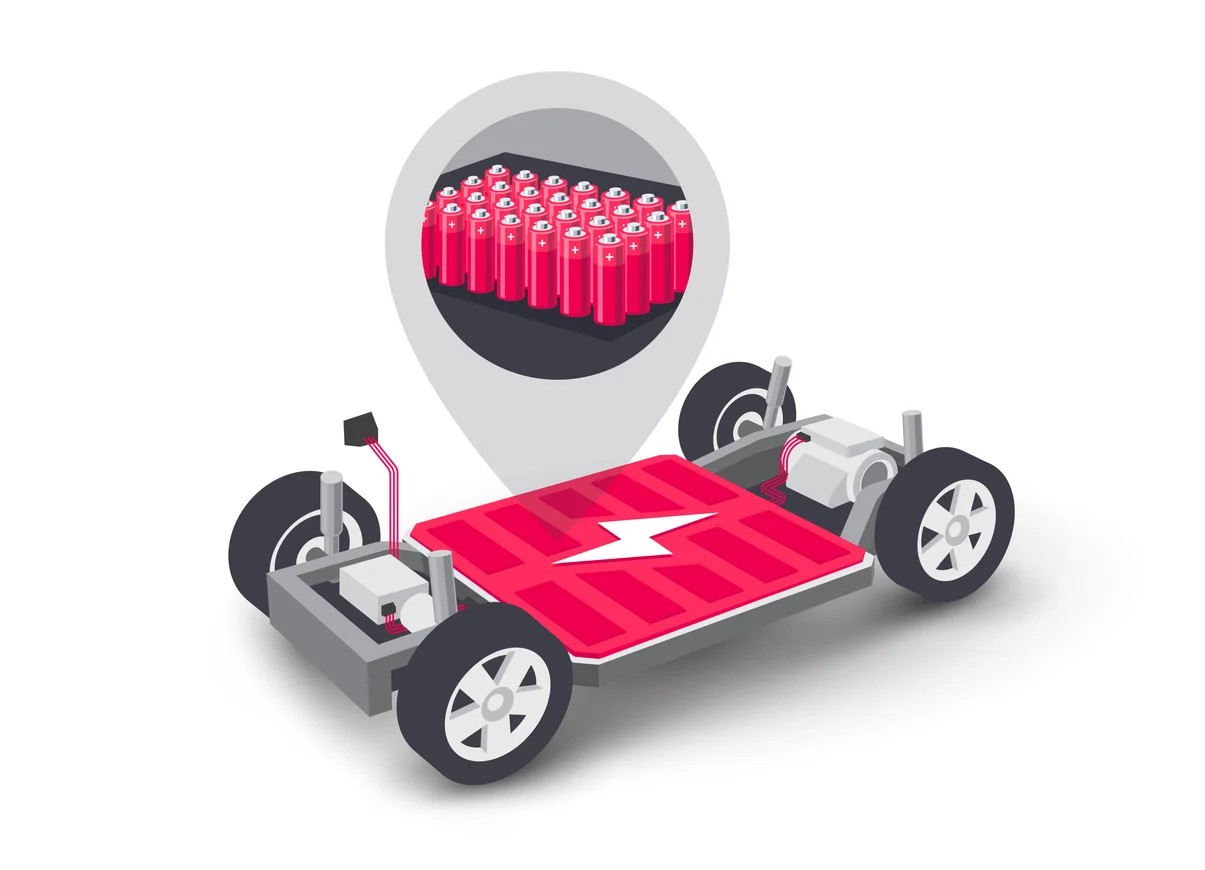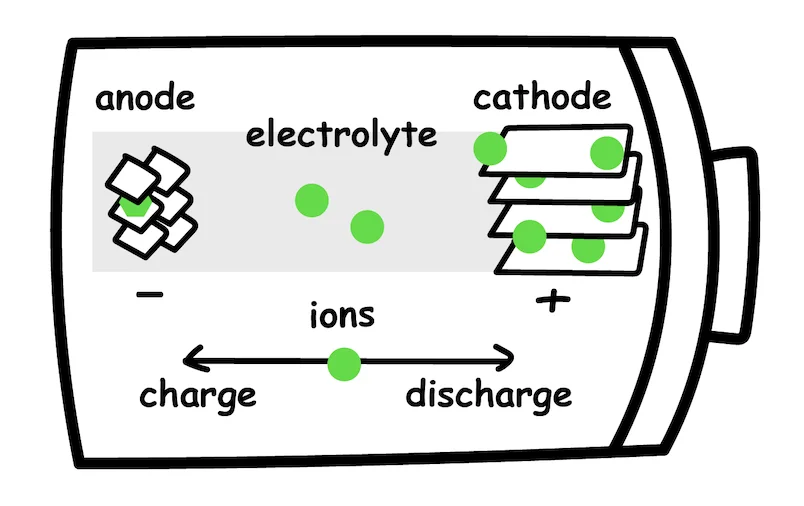Battery cells are the smallest unit of a lithium ion battery. Battery cells are where chemical energy is converted into electrical energy by moving lithium ions back and forth from node to node. The way battery cells are connected within a module changes their performance. The arrangement of the module is a mechanical process that adjusts the voltage and energy capacity to suit the needs of the device being powered, in this case, an electric vehicle.

To align battery cells in a series, the positive terminal of a cell is connected to the negative terminal of the next cell, essentially lining the cells up together in a row. Connecting cells in a series increases the voltage and efficiency, using less electrical current to achieve the same result. The power a device consumes is equal to the operating voltage multiplied by the current drawn. Increasing the voltage reduces the current needed to power a device. A lower current means less heat, which is definitely a good thing in an electric vehicle (Lithium-ion batteries do not like heat). Lower current also allows the system to use thinner wiring, which reduces the overall weight and volume of the battery and motor system. Lighter weight batteries mean lighter, more maneuverable cars and more space for other design features.
Aligning cells in parallel, however, connects all the positive terminals of the linked cells together and connects all the negative terminals together. In parallel connections, the voltage remains the same, but the capacity, measured in amp hours (Ah) increases. Each additional cell linked in parallel gives the battery more runtime. This allows the battery to last longer. Plus, if one cell fails in a parallel connection, the other cells will continue to provide power.

It’s important to note that the total available energy (usually measured in kilowatt hours) will remain the same regardless of how the cells are arranged within a module. The number of kilowatt hours available is equal to the voltage multiplied by the capacity (kWh = V x Ah). Whether the cells are aligned in a series to increase the voltage, or arranged in parallel to increase the capacity, the only way to get more energy from a module is to add more cells. In addition, the cells that are connected must be of the same type and power in order to function properly. If cells with different voltages or different capacity ratings are linked, the inconsistency will eventually cause the battery to fail. The weaker cell will wear out more quickly and could create a fire hazard. Regardless of how the cells are linked, they must be identical.
Battery cells can also be linked together in a series/parallel connection, using both types of connections to increase voltage and capacity. Lithium-ion batteries are well suited to series/parallel connections, benefiting simultaneously from the advantages of both types of connections.
Electric vehicle batteries are made with hundreds of individual battery cells, linked together in series/parallel. The combination allows EV manufacturers to increase the voltage, lower the current, and increase the runtime of the battery.

When charging at home, most EVs draw about 7,200 watts. That’s a little less than an electric furnace and a little more than a water heater. Currently, most electric vehicles have 400v batteries, but that’s changing. Some new EVs are using 800v batteries, and more companies will likely make the switch in the coming years. Using an 800v battery essentially cuts charging time in half. Until electric vehicles manufacturers can figure out solid state batteries, the 800v batteries are the best of the best, with charging speeds as swift as 10% to 80% in 18 minutes. However, the next generation of battery technology, solid state batteries, is on its way. Both Nissan and Toyota are hoping to have solid state batteries ready and in vehicles by the middle of this decade. Soon, charging an EV battery could really be as quick and easy as filling a tank with gas.
Written by River James, a writer, editor, and researcher based in San Diego, California. For her personal thoughts and musings, check out her Substack.



